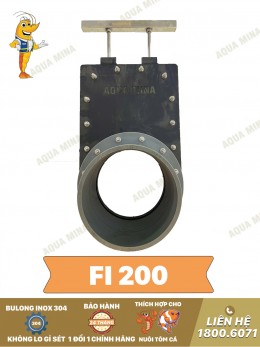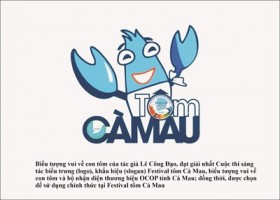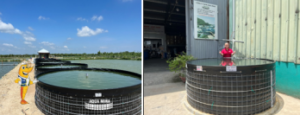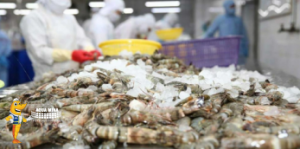SHARING HOW TO CONTROL ALKALINITY IN SHRIMP PONDS
What is alkalinity?
- Alkalinity is defined as the ability to neutralize acids in water, represented by the total number of basic ions in the water such as hydroxide (OH–), bicarbonate (HCO3–), and carbonate (CO32–).
- Alkalinity indicates the buffering capacity of water, or its ability to resist changes in pH when the environment shifts towards increased acidity or alkalinity.
- High alkalinity helps stabilize pH; conversely, low alkalinity can cause daily pH fluctuations, which can shock the shrimp.
- However, if alkalinity is too high (greater than 200 mg CaCO3/l) and pH exceeds 8.5, shrimp may have difficulty molting due to hard shells, resulting in slow growth.
- In whiteleg shrimp ponds, the appropriate alkalinity level is between 120 – 180 mg CaCO3/l, while for black tiger shrimp, it should be between 80 – 120 mg CaCO3/l to ensure optimal growth.
- To maintain reasonable alkalinity levels, testing should be conducted every two days in the morning.

Causes of Low Alkalinity and Solutions
Causes:
Heavy rain
Sulfur-affected soil
Mineral deficiency in water
Ponds with many snails and mussels (bivalve mollusks)
Shrimp molting process consumes alkalinity, causing a reduction
Solutions: Use 5 kg of dolomite mixed with 4 kg of molasses at 7 AM, then by 8 PM, dilute it with water and spread it evenly across 1,000 m³ of the pond. Operate aerators at full power to mix thoroughly. Measure again the next morning; if it’s still below target, repeat the process until the alkalinity in whiteleg shrimp ponds reaches 120 – 180 mg CaCO3/l and black tiger shrimp ponds reach 80 – 120 mg CaCO3/l.
Applying hydrated lime at a dosage of 2-3 kg per 100 m³ of water, dissolved and mixed with mineral water, should be spread in the pond at 10 PM. This should be done continuously for 2-3 days to increase water alkalinity. Additionally, supplementing with minerals and Vitamin C in feed can boost shrimp resistance and help them molt uniformly and harden their shells quickly.
In cases where many snails, mussels, and bivalves appear in the pond, using probiotics or crustacean-specific treatments can safely eliminate them to better control alkalinity in shrimp ponds.
*Note: At 25 degrees Celsius, if pH is <5 or >8.3, alkalinity is difficult or impossible to increase.
Causes of High Alkalinity
High alkalinity is often due to the source water. In limestone regions, incoming water usually has high alkalinity.
Groundwater often contains high CO2 levels, leading to higher alkalinity.
A high density of algae in the pond increases alkalinity rapidly due to their photosynthesis (pH > 9).
Solutions:
For high alkalinity, this parameter usually does not significantly impact shrimp unless combined with high pH, in which case water replacement may be necessary.
Use EDTA at 1-2 ppm between 9-10 AM.
Contact AQUA MINA for consultation and supply of aquaculture round tanks and aquaculture equipment for high-tech shrimp farming.
- Address: 685 National Highway 1A, Binh Hung Hoa Ward, Binh Tan District, Ho Chi Minh City
- Phone: 1800 6071 (Toll-free hotline)
- Email: sales@aquamina.com.vn or oversea@aquamina.com.vn
Aqua Mina's distributor in Japan:
REX INDUSTRIES CO., LTD
- Address: 1-9-3 Hishiya-Higashi, Higashi-Osaka 578-0948 JAPAN
- Email: kimakubo@rexind.co.jp
- Phone: +81-(0)72-961-9893
- Website: http://www.rexind.co.jp/e/

Ngày đăng : 06/11/2024
2603 View
Other Articles
Vietnamese shrimp and catfish choose a sustainable path in global competition
End-of-Season Shrimp Prices Reach Record Highs
Norway – Russia Reach Barents Sea Fisheries Agreement for 2026
Cà Mau strengthens traceability to enhance the competitiveness of the shrimp industry.
Cold stress: Effects on the plasma characteristics of whiteleg shrimp.
A new breakthrough in the prevention of diseases caused by the microsporidian parasite EHP in shrimp farming
Vietnam’s shrimp export outlook in the first quarter of 2026 continues to face heavy pressure from tariffs.
New England’s shrimp fishery to shut down for the long haul after years of decline
Crab exports to the United States account for more than 80%.
Thailand sets a target to increase shrimp production to 400,000 tons by 2026.
CTU-RAS: Recirculating Shrimp Farming for Sustainable Development
Vietnamese aquatic products reach new markets



















.jpg)